Waves lap at the hull of the boat. Your feet are in the glassy water, a glass of rum in your hand, and a glorious sunset in front of you. Of course, the weather is perrrfect.
Just another day in the life of living on a boat.
Surely that’s not all what living on a boat is like though, right? What about the sea monsters? What about getting shipwrecked and floating for days on end at sea awaiting rescue?
And as if a broke bum can really live on a sailboat. Come on!
Rest assured, greenhorn – I’ve got you.
I went from a baby sailor who almost blew up the boat, to hand steering my way across the Pacific Ocean using the Southern Cross as my bearing. And I did it all with very little cash to my name.
Now I’m here to pass on to you what it’s really like to live on a boat AND how to do it. It’s the how-to-poop, how-to-cook, how-to-sail – and the best places in the world to do it all in. PLUS how exactly you can put a budget on a dream.
Avast! I give you, how to live on a boat and travel the world.
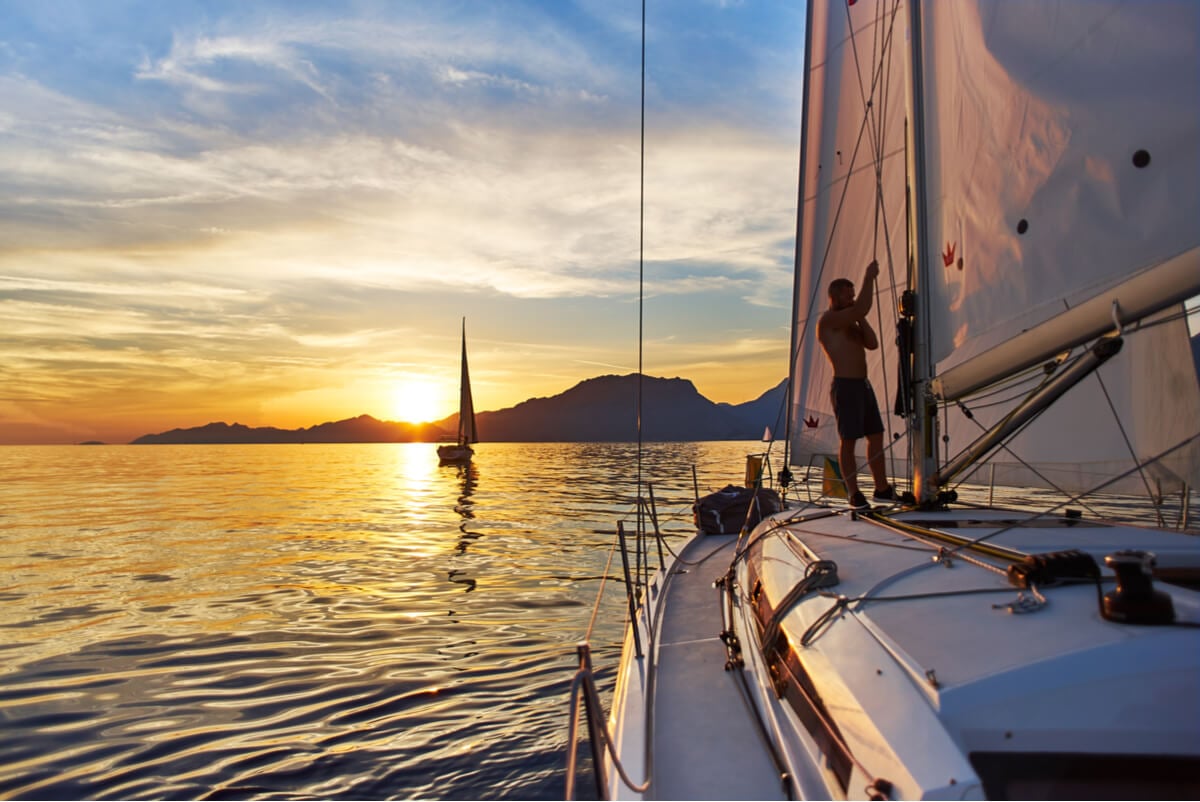
Living on a Boat: What’s it Really Like?
“Indigo, where’s the F**CKING coffee?”
Yeah, you want to buy a boat. And then you’re going to sail off into the sunset – travelling the world without spending a dime – with twelve babes on one arm and the world’s greatest rum in the other. Oh, it’s going to be so lovely, isn’t it?
Welllllll, I’m not here to burst your bubble, but I am here to give you a wee reality check.
Living on a boat is not for suckers; it’s not for the impatient; it’s not for the stupid. I realise that many people who suck and are stupid, can and do sail. They give the rest of us a headache – don’t be them.
If you forget the coffee, the rest of the boat may very well feed you to the sharks. The only shop for the next 200 nautical miles is now a distant speck on the goddamn horizon, after all.
However, provided there is ample coffee, rum, and good conversation, there is nothing better than living on a boat. No, that is not a cliche.
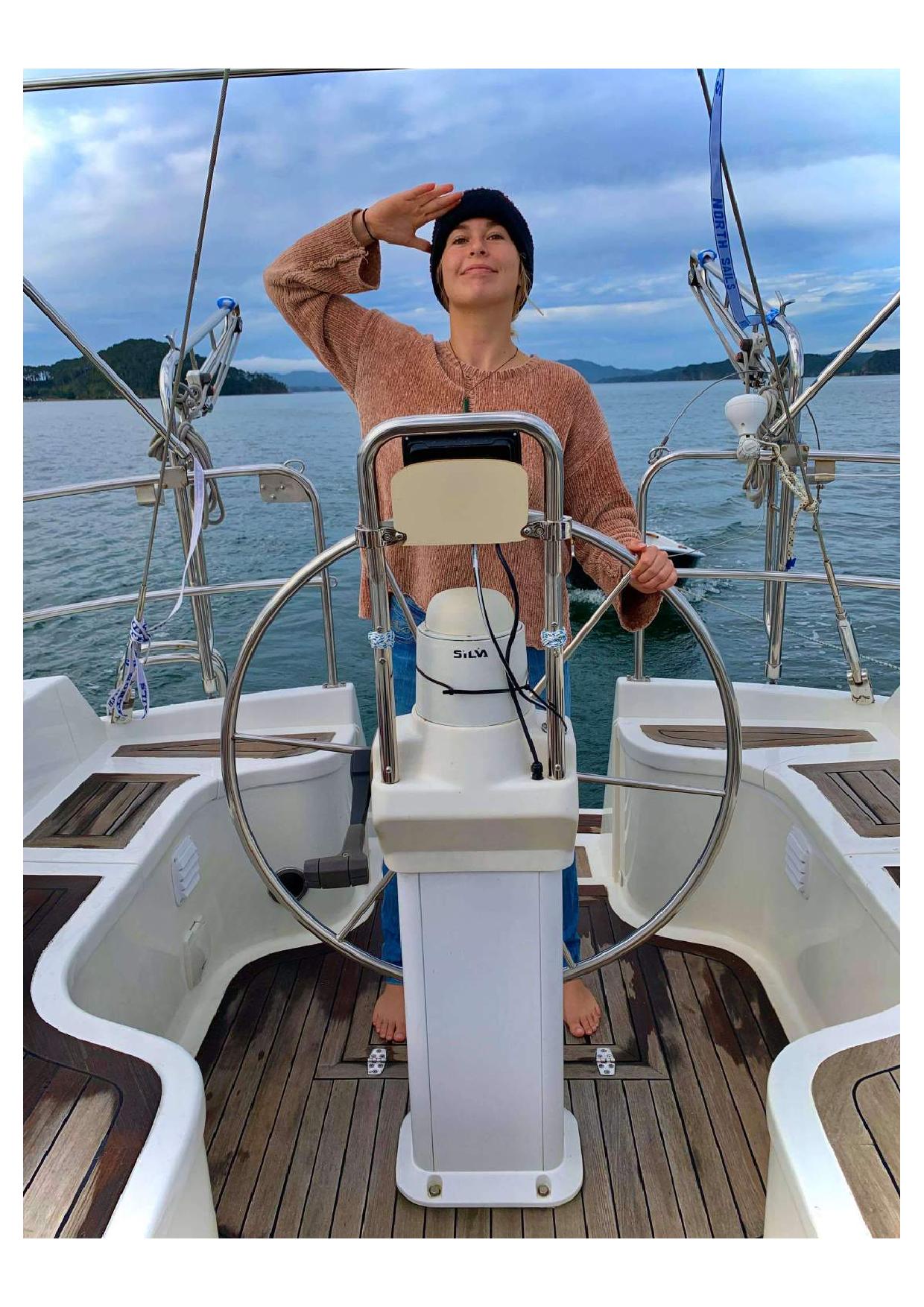
Photo: @daisykermode
Life on a sailboat is life at its most.
- The duality of boredom and near-death experiences.
- Harnessing the wind and moving soundlessly across the great blue spectacular.
- Fresh sashimi.
- Deep introspection.
- The oscillating moods of the crew that spread like the flu.
- Long stretches of time with no goddamn Instagram.
A boat becomes a very miniature village, and in this, you can touch on a very primal way of living; one that has been passed down to us from many millions of years of evolution.
The simplicity is not always poetic. But it will make you appreciate every damn cup of coffee – and isn’t that what life is all about?

Do You Want to Travel FOREVER??
Pop your email in below to get a FREE copy of ‘How to Travel the World on $10 a Day!’.
How to Live on a Boat Full Time
So here it is folks! The basic and hyperbole-filled how-to of living on a boat.
It’s just three simple things. (Sort of.) And then, the ocean is your oyster.
Hoist those sails and may the wind be ever in your favour.
Boat Life 101: Pooping

Don’t laugh! Pooping on a boat is your first lesson in how different living on a sailboat is to land life.
You have to think about the consequences of your every action: sustainable travel MATTERS. If it’s a small sailboat, it will likely have a manual pump instead of a flush. You do your business, and then pump, pump, pump.
And that’s not where it ends. You need to think about where exactly your poop is going.
It becomes very clear that all drains lead to the ocean.
Usually, your poops will be going into the boat’s holding tank, but they only hold so much. You need to know the regulations in the national waters of wherever the boat is because you can’t empty the holding tank until you’re far enough away from shore, certain mooring fields, and protected areas… for obvious reasons.
Now, I would argue you haven’t lived until you’ve dealt with a malfunctioning head (marine toilet). Nothing makes you appreciate modern sewerage systems like the sweet smell of shit.
Boat Life 101: Cooking + Provisioning
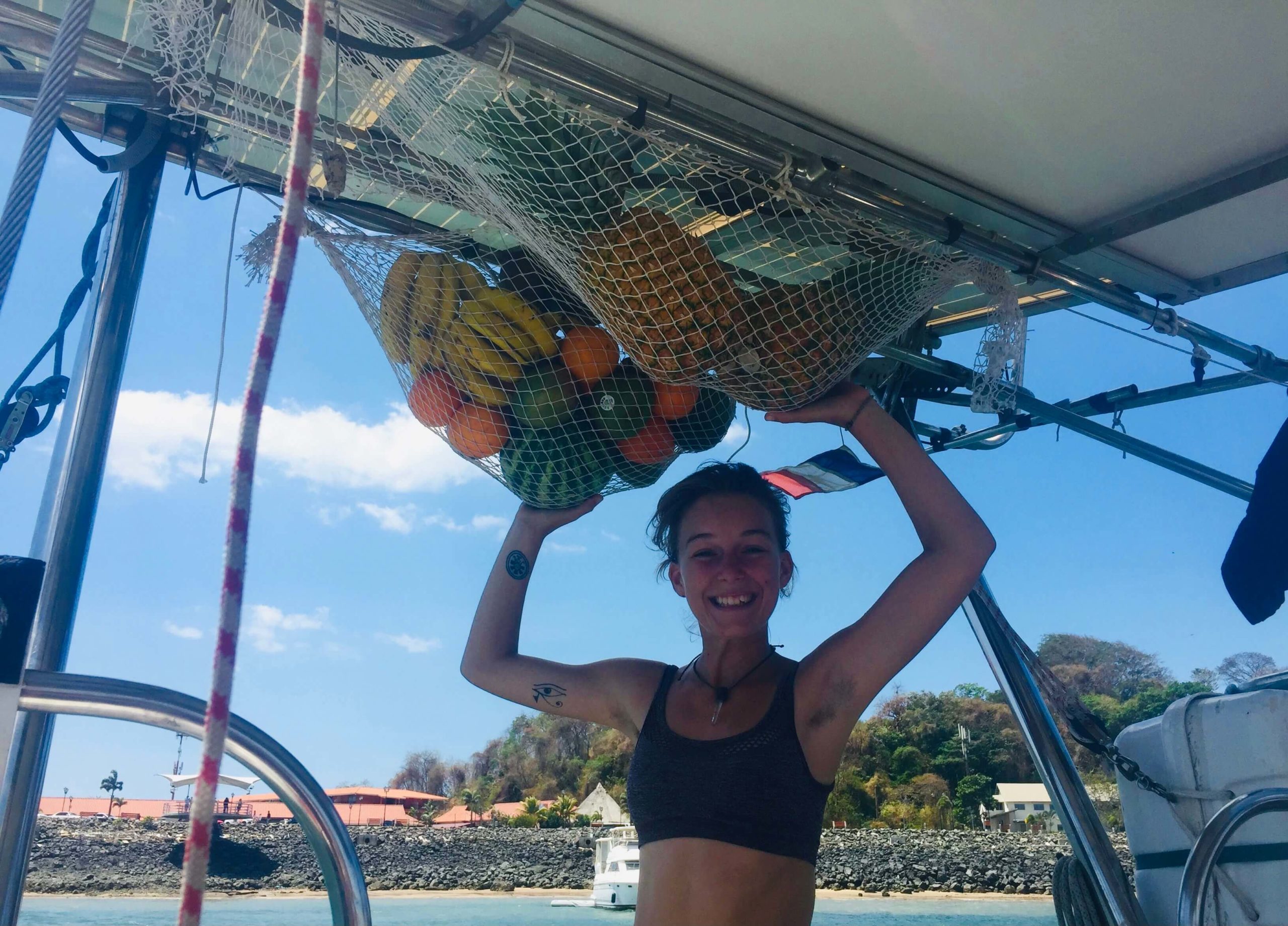
The consequences of your actions continue here. Even if you are sailing in proximity to shops or markets, the basic fact remains that the shops are on land and your boat is on the water.
That means there is no nipping to the servo for some extra milk that you forgot. You have what you have on the boat, and you make do.
So yeah, not bringing enough coffee for the passage? A dumb mistake you only make once.
Living on a sailboat has made me an organised (one might say obsessive, but one would be wrong) motherfucker. I am a HARDCORE list-writer, but you need lists when you live on a sailboat.
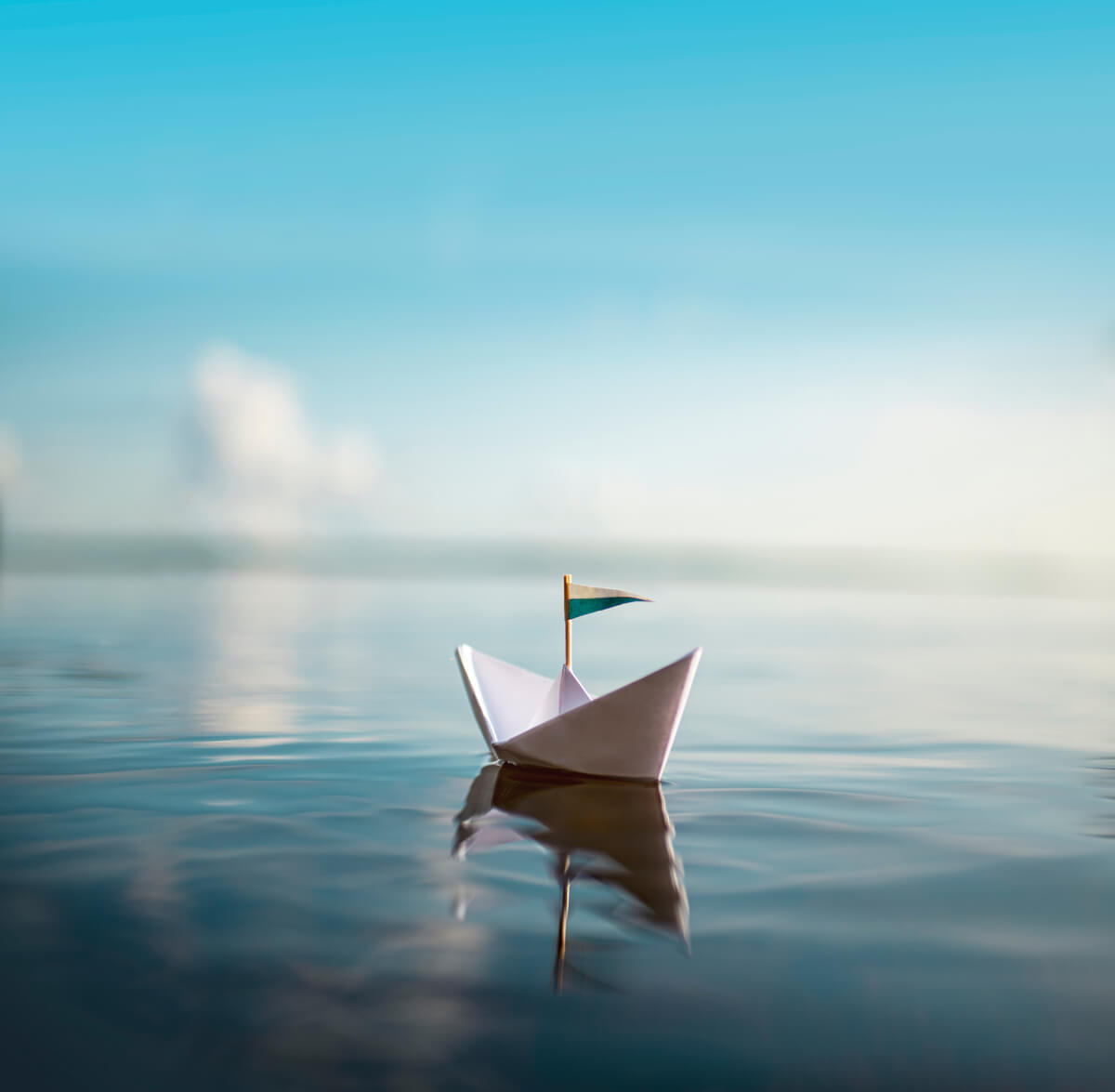
WRITE LISTS. And keep them going all the time.
- The food and supplies list.
- The fix-it list for maintenance.
- The visa requirements and beaurcracy list.
- The all-important books to read list.
If you go on an overnight sail and you know there’s food at the next anchorage, then you can get away with forgetting the coffee just this once. If you’re crossing the biggest ocean on Earth, that’s not gonna fly. You need to write a bloody list.
Also, food sometimes needs to be refrigerated. Refrigerators come with limited space and the frustrating tendency to gain sentience halfway through a passage. With sentience comes a severe attitude and willingness to ruin your food.
All I’m saying is, you gotta plan your meals, know how you’re going to store them, and write lists.
Oh, and it sounds obvious, but while sailing, the boat moves.
Yes, the stove on a boat is on a gimbal which means it swings with the motion of the boat and compensates for the movement. But when King Neptune feels the sailors on board have grown too comfortable, the soup says hello to the floor.
Boat Life 101: How do I sail this thing?
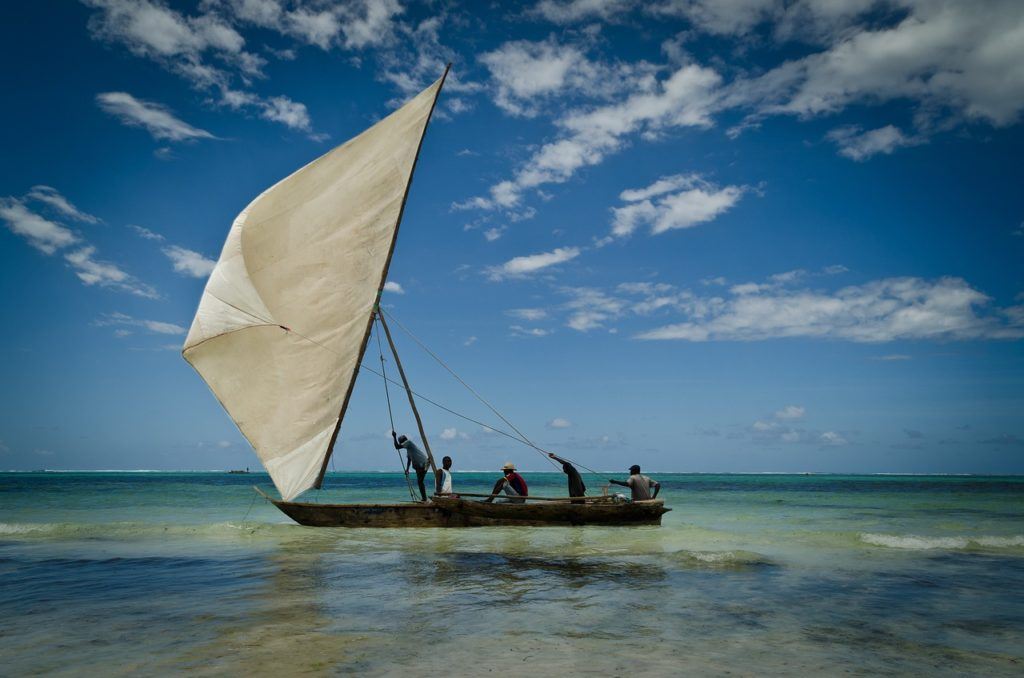
If you can take a shit and cook a meal while on a sailboat, you’re 90% done.
Collectively, we humans have been chucking some cloth on a bit of wood to capture the wind since the original discovery of Australia and the Solomon Islands (50 000 – 25 000 years ago).
Over the millennia, the process has become more refined. Now we can sail upwind and tack and all this fancy stuff. But ultimately, with a little patience and a lot of practice, anyone can learn to sail.
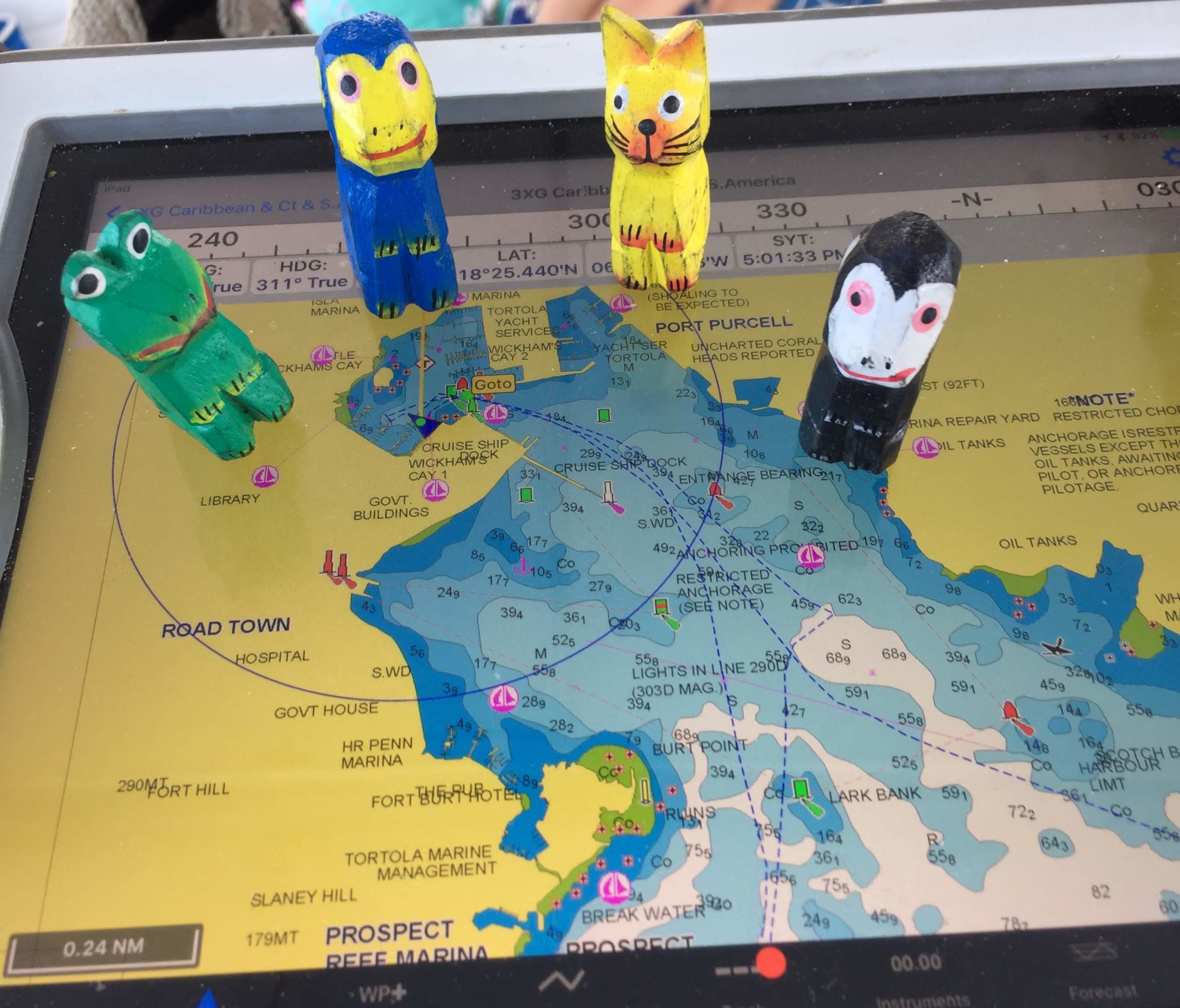
There is a multitude of electronic tools – chart plotters, AIS, GPS, Iridium GO – that help you keep a track of where the hell you are and give you detailed charts about where you want to go.
You can even get the weather sent in a tiny little electronic file via a device like the Iridium GO, even when you’re sailing across the Pacific Ocean. Very handy for avoiding boat-sinking storms!
Putting some sail on a mast and heading off has never sounded so sweet! But if you learn a thing or two about the trade winds, you can make your journey even sweeter.
The trades are these delicious winds that blow reliably from east to west, meaning you can access a reliable source of energy to propel you forward (provided you want to head west).
Trade wind sailing is famous for being fucking chill, with few gnarly storms and not too many becalmed days of boredom. The merchants of the tall ship days and the modern boat bum circumnavigating the globe both love the trade winds. Yes, for the easy sailing, and also for the good rum found at many of the ports along the way.
But when all else fails – say if your mast is struck by lightning and all your electronics are fried – there are still ways to orientate yourself on the big blue. These are methods that have evolved over our collective sailing history:
- Celestial (star) navigation: Using the constellations and a sextant, plus some maths, to figure out the boats latitude and longitude.
- Cloud navigation: Recognising the flat bottomed clouds associated with land to keep you on track back to terra firma.
- Reading the swell: This is just fascinating. This means understanding the persistent swell that move across world oceans and their relation to the star quadrants to estimate where your boat is and where it is going.
Test the Waters BEFORE You Sail – The Liveaboard Experience!
Another way you can get a taste of the boat life before you commit to a lifelong project is to charter a boat! Sailo does just that: Sailo lets you rent the boat life.
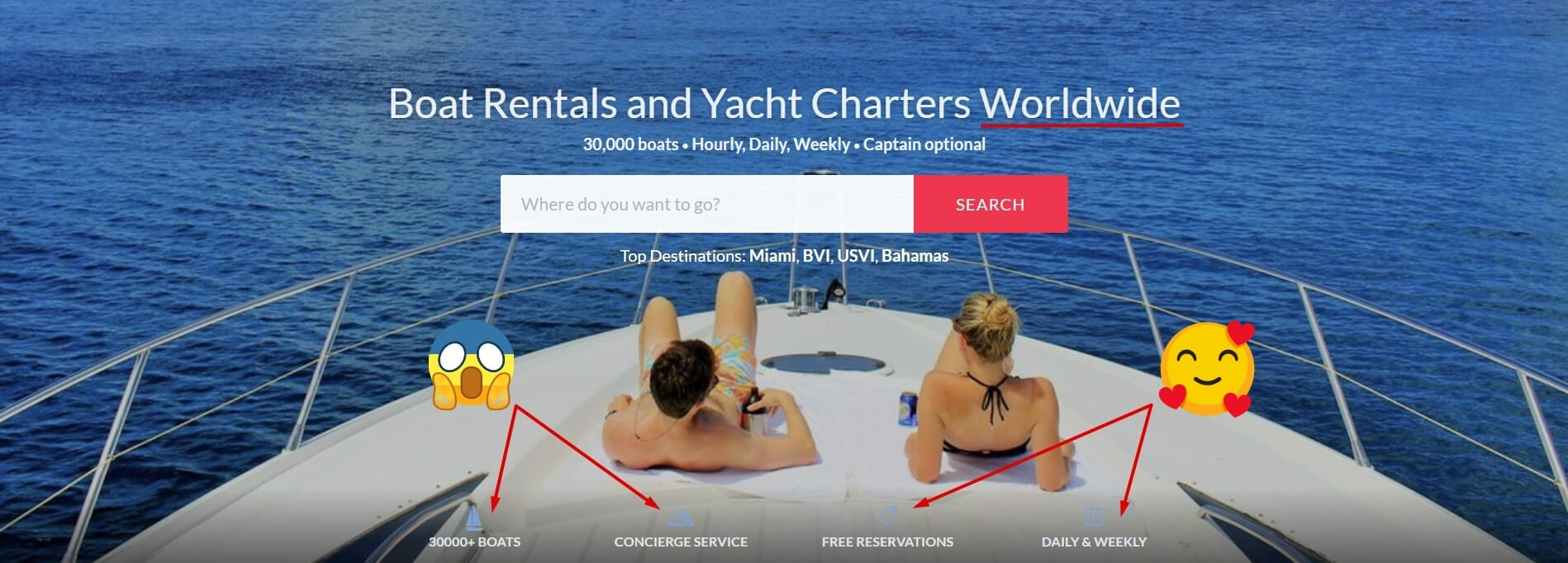
You get a boat, a sampler of the experience of living on a sailboat, and people on deck that actually know what the bloody hell they’re doing! With over 30,000(!) boats to charter from and a fabulous selection of the BEST places to live on a boat around, you’re guaranteed to find something that… floats your boat.
Sure, it’s not the no-frills boatbum style, but ultimately, you can choose to do it bareboat – with no captain and you bring all your own provisions. Or you can choose to have the boat crewed so you can sit back, relax and, learn a thing or two about boat life. (And drink champagne.)
Best Places in the World to Live on a Boat (And When To Go)
Living on a boat comes with a host of challenges (and juicy rewards) that are made that much easier by picking a good place to do it in.
Access to quality boatyards, provisioning, internet connection – these are all big plusses for those living on a sailboat!
But also, all the stuff that made you want to partake in this mad boat lifestyle in the first place rate highly too. A plethora of remote beaches, magic sunsets, and a friendly cruising community of cool travel buddies (soon to become treasured friends) can make or break a dream destination.
I’ve also considered how easy it is to top up the cruising kitty with funds by rating how easy it is to find work in each place.
Australia + New Zealand
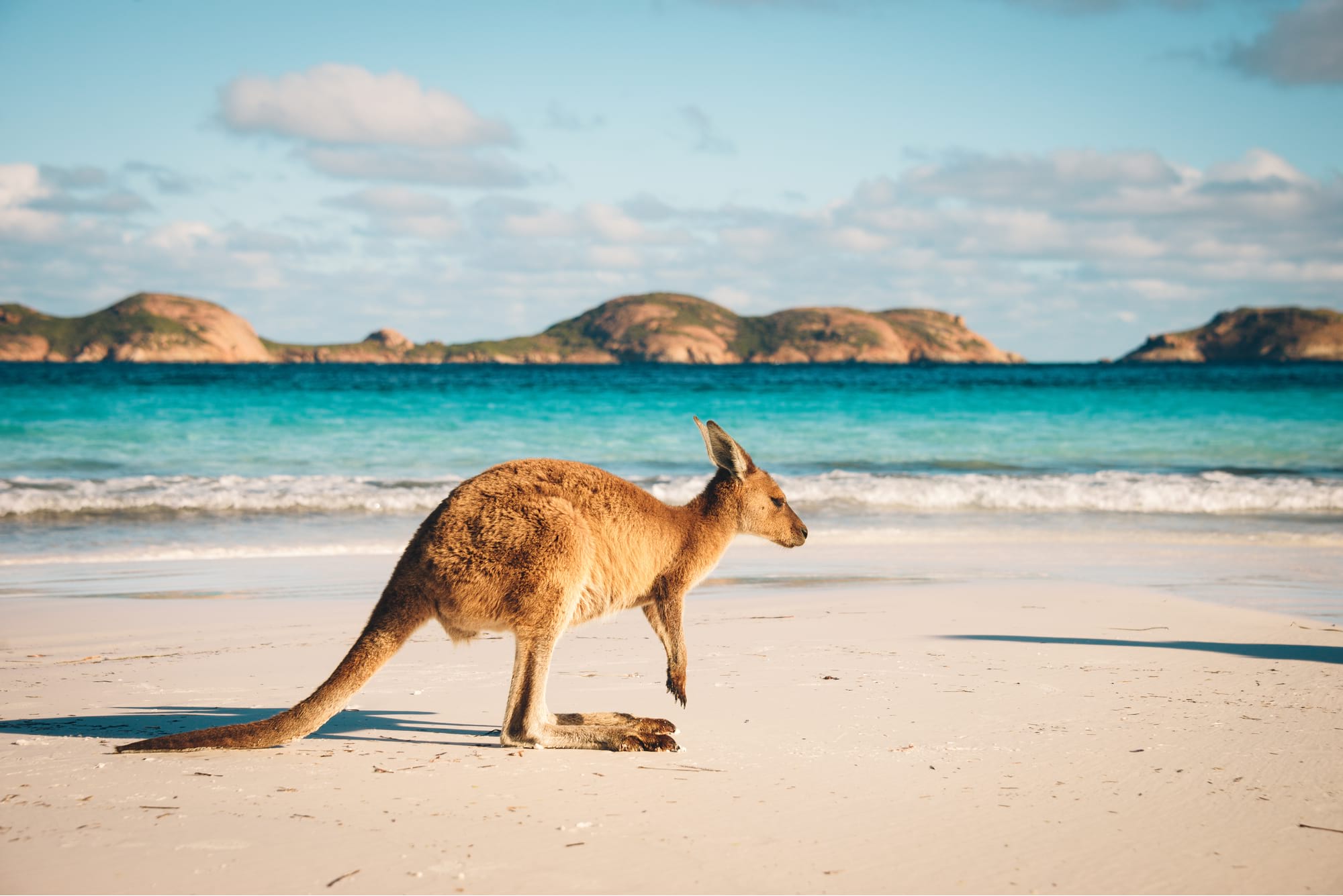
- When to go: November – May (NZ & southern Australia)
April – September (northern Australia)
- Best suited liquor:
EMU BITTER MAAAATEWhatever the Australians aren’t drinking.
I don’t care that the citizens of both these fine nations will be after me with pitchforks for lumping them in the same pile. Honestly, mate, bro, whatever, come at me. They’re both equally dope places to liveaboard your sailboat.
Yup, gonna say it right now, both these places can be expensive for the boat bum. But they also provide good-paying work opportunities if you can play the visa game right. So they are great places to slow down, pick up a travel job, and stack some cash for future ocean adventures.
You can also take a break from the boat life, and go on an epic backpacking adventure around New Zealand. You won’t know how much you miss the ocean until you take a break from her, trust me.
Also, the sheer diversity that I’ve so callously dumped in one heading is incredible.
Honestly, you can sail down to Stewart Island in the subantarctic waters and then back up to the Eden on Earth in the equatorial Torres Strait.
You could spend a whole, wonderful lifetime sailing between these two continents and still die regretting not having seen everything.
The long and the short of it:
- You can make bank here $$$!
- You can get your boat fixed properly here. Island nations like Australia and New Zealand have a wealth of boat building and fixing experience.
- There are well stocked supermarkets here, so you can stock up on bulk items that prove tricky to find in more remote locations.
- People are cool, remote beaches are cooler. And there is a metric shitton of incredible beaches here.
- There’s also an opportunity for non-boat adventures (like backpacking around Australia) that will make you appreciate the ocean nomad life even more.
- Diversity! Of landscape and cultures.
- Dude, the first nations of Australia managed to cross over from Papua New Guinea (probably) 60 000 years ago. SIXTY THOUSAND (louder for those in the back). The knowledge on this ancient continent will humble you if you pause to listen.
- And the seafarers that made it to Aotearoa? The Maori are some of the most badass, friendly, wise, creative, HILARIOUS people you will ever have the privilege of meeting.
- $7 bottles of wine. Sorry. But like, yes please.
- There’s epic diving in New Zealand and all over Australia with endless (and scrumptious!) spearfishing opportunities.
- Living on your boat here is easy. Not without its struggles of course, but it’s always easier to struggle close to wifi connection.
The Caribbean
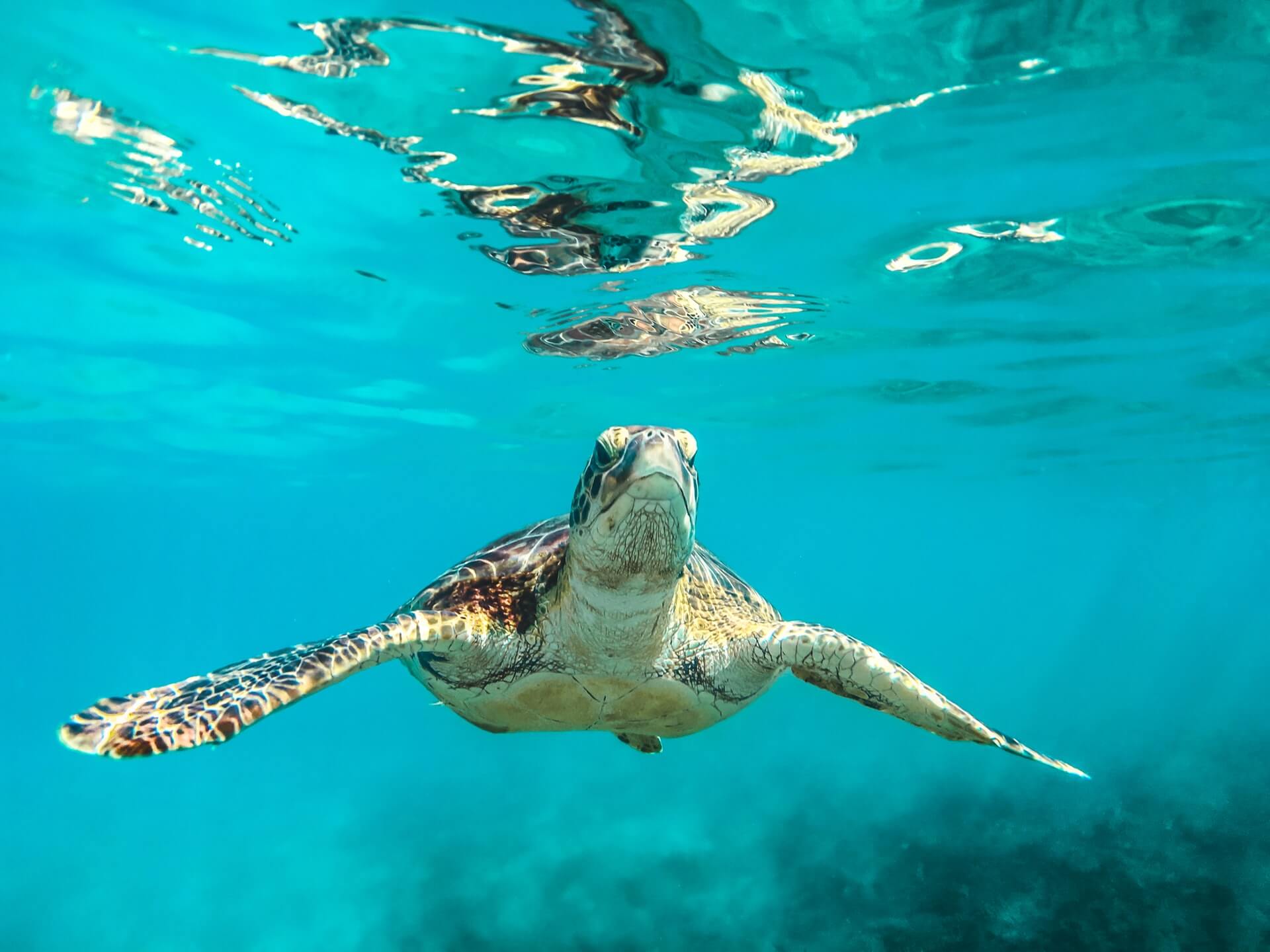
- When to go: The conventional advice says December – May, but you can sail here year-round if you know how to dodge hurricanes.
- Best suited liquor: Rum. Obviously rum. Maybe with a squeeze of lemon and a splash of cola.
If you can dodge the hangouts of the rich and the famous (or work out how to make money off them) sailing the Caribbean and living on a sailboat is very rewarding.
Salsa lessons in the streets of Puerto Rico, rum-soaked nights in the Virgin Islands, goat hunting, spearfishing, azure waters, and white sand beaches all the way down to Bonaire.
Getting into the charter boat game provides a great way to make dat money. During the high season, this is one of the most popular places in the world to charter a boat.
If you are happy to do your own boat repairs, a lot of fishing, and get clever with your travel budget, the cost of living in the Caribbean is not super expensive either. You just gotta know where to go for what.
Cheap coffee and rum can be brought in bulk in the Dominican Republic. There’s a Costco not far away in Puerto Rico, so you can get some bulk toilet paper. Then it’s onwards to a deserted island, a reef, and some endless fun in the sun.
The long and the short of it:
- Cheap boat repairs are available in places like Rio Dulce, Guatemala. So, for those big projects you can save quite a bit of money by getting them done here.
- The rum. I mean, it has truly been perfected here.
- There are oodles of work opportunities in the charter business or in the superyacht world.
- Cheap flights back to the USA means you can feasibly travel between the USA and El Caribe guaranteeing you an endless summer.
- The glorious azure waters and their 27-degree celsius temperatures. Helllloo, nude night diving.
- Warm, deliciously WARM, diving.
- More people at the anchorages = a very social and welcoming community of cruisers. There is a great liveaboard culture that’s hard to replicate elsewhere.
- Easy trade wind sailing.
- Did I mention the rum?
The South Pacific
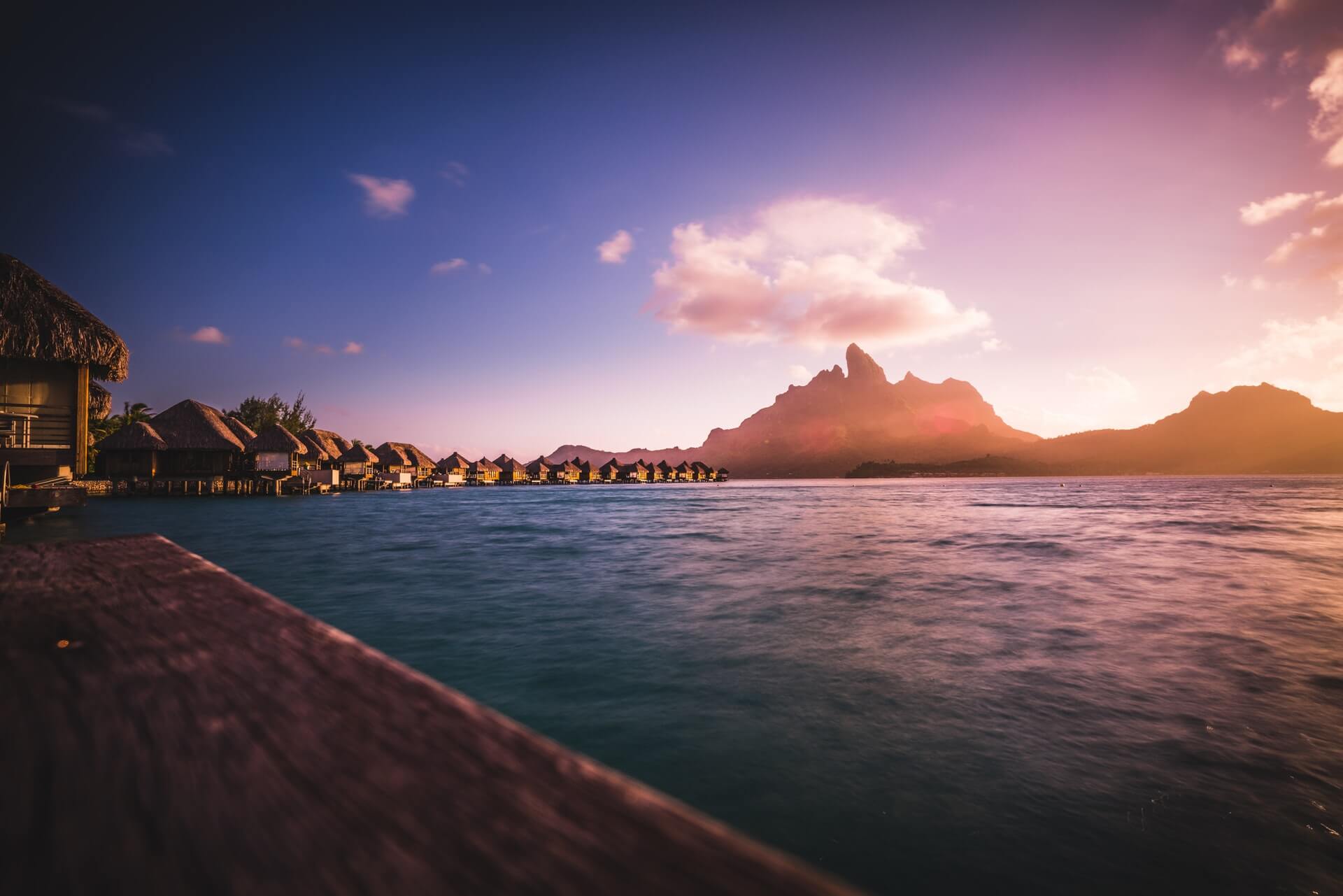
- When to go: May – October (You can arrive in the Marquesas in April with no problems.)
- Best suited liquor: A little vodka, a lotta soda, a squeeze of lime.
I won’t even try to hide my bias. I LOVE the Pacific.
Is it the best place to live on a sailboat for most people? Probably not. Because the distances between your boat and a grocery store are usually mind-boggling. It can be expensive. It can be lonely.
There’s just no way quite like travelling to places like French Polynesia the way you can on a boat. Out in the middle of the ocean life is not always easy, even if it is full of palm trees.
But fuck it, I love the Pacific, so we’re including it.
No, honestly, if you can mitigate the challenge of distance, you are rewarded with the best planet Earth has to offer. Incredible diving, a slow pace of life, some world-class hiking trails (and world-class peaks), lazy sunshiney afternoons. Perfect postcard sunsets. Mmmmm.
A full one-third of the globe is consumed by the Pacific Ocean, and scattered throughout this utter vastness are innumerable tiny little islands. Luckily for the bum of the seas, the trade winds can carry you from the Americas to these little flecks with few problems.
In fact, all the technical sailing here is relatively easy. As long as you don’t get becalmed at the equator thanks to the weirdness of the ITCZ band, it is easy sailing.
But you’re going to need a water maker and have a solid solar panel set up for power. Because between Panama and the Marquesas, there are approximately 3800 nautical miles – more if you go stop in at the Galapagos.
That’s a long way between places to buy coffee. And there’s not much in the way of supermarkets until you get to Tahiti, another 800 nautical miles away.
If you leave IndigoRadio on for long enough, inevitably Kiribati will come up. You can hide from hurricanes here. The South Pacific is defined by island life at an island tempo:
- You can get delicious fish on the end of your gidji real fast here.
- Hammocks.
- People-less anchorages.
- Dreamy atolls.
- And not a damn supermarket in sight.
Ok, not everyone’s idea of easy sailing, but certainly my idea of the best that living on a boat has to offer.
There is a multitude of lifetimes that could be spent escaping the rat race and kicking back in the Pacific. There is an awesome amount of diversity of landscapes and cultures here too, not to mention a proud seafaring tradition that we aspiring boat bums should shut up and learn from.
A Tip From One Pirate to Another
Okiedokie, you wild little circumnavigator-to-be! There are multiple ways to criss cross the globe. Resources like noonsite.com and Jimmy Cornell’s cruising guides will be invaluable to you in the planning and execution stages of your journey.
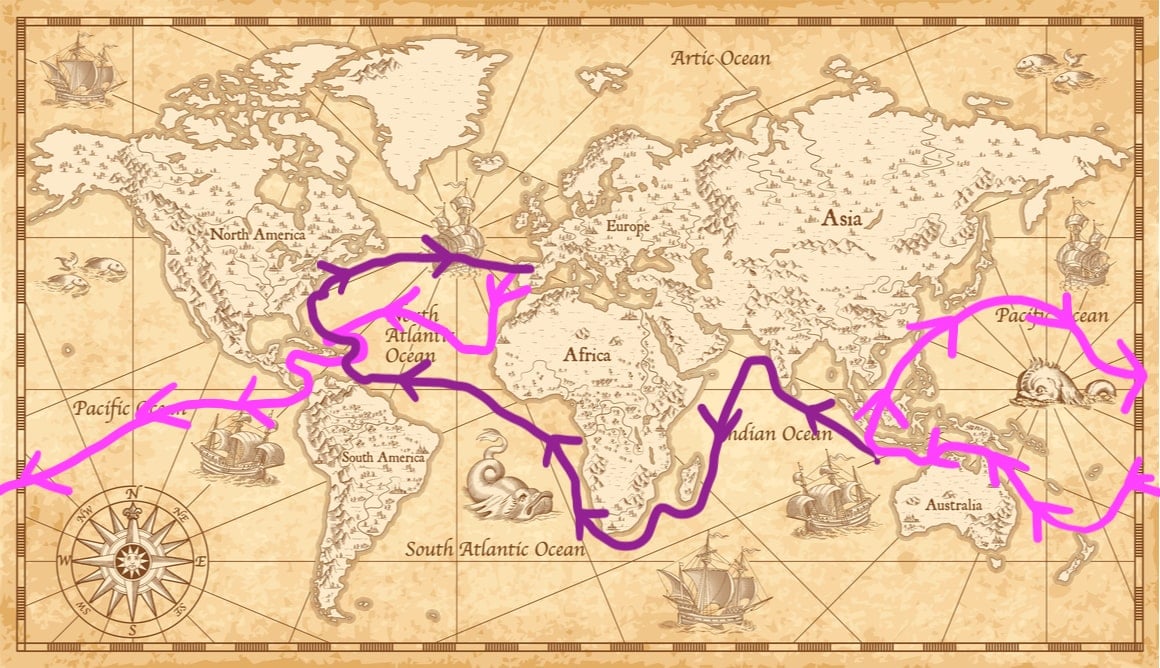
But at a glance: I would suggest starting in Europe and the mediterranean and picking up the trade winds west across the Atlantic in this order:
- Through the Caribbean and through the Panama Canal.
- Onwards across the South Pacific, kissing New Zealand and Australia before either…
- Circling through South East Asia and back across the Northern Pacific…
- OR continuing up past Sri Lanka then…
- Around the Cape of Good Hope before…
- Going back across the Atlantic and the northern coast of the USA and back home!
Use the trade winds to your advantage! Go west until you can go west no longer.

Things go wrong on the road ALL THE TIME. Be prepared for what life throws at you.
Buy an AMK Travel Medical Kit before you head out on your next adventure – don’t be daft!
Buy on REIThe Cost of Living on a Sailboat (And How to Minimise It)
No sugar coating here. Buying and maintaining a sailboat, no matter how much it resembles a tin can, adds up real fast.
But when the eternal sunshine and the lessons of the great blue spectacular call you – when King Neptune drafts you into his eternal service – it’s time to find a will and a way.
Here are a few tips to help you plan a trip that I’ve picked up from my short time making various vessels my temporary abodes:
- Don’t buy a project boat unless you want a project. It will cost you more to fix everything on a broken boat than it will to buy a boat that’s good to go.
- But, when you do need to repair, DIY. Endless learning, yay! Or, plan your sailing route to include time in places like the Rio Dulce where repairs are cheaper.
- Anchor more often than you stay in marinas. Marinas are devilishly expensive; anchoring is deliciously free.
- Volunteer on someone else’s boat before you get your own. 😉
If done right, this is win-win. You can take share in the labour of running a boat (for example by standing night watch) while learning the finer points of sailing from a master. - Get seasonal work. There are so many options when it comes to this, from ‘backpacker’ staples like agriculture and hospitality to working on superyachts or as dive instructors.
- Or have residual or passive income if you’re real cool. If you’re on that elusive property ladder or earning money online, why don’t you have a boat?
Just head off now and live off your automatic wealth. Be a cool kid.
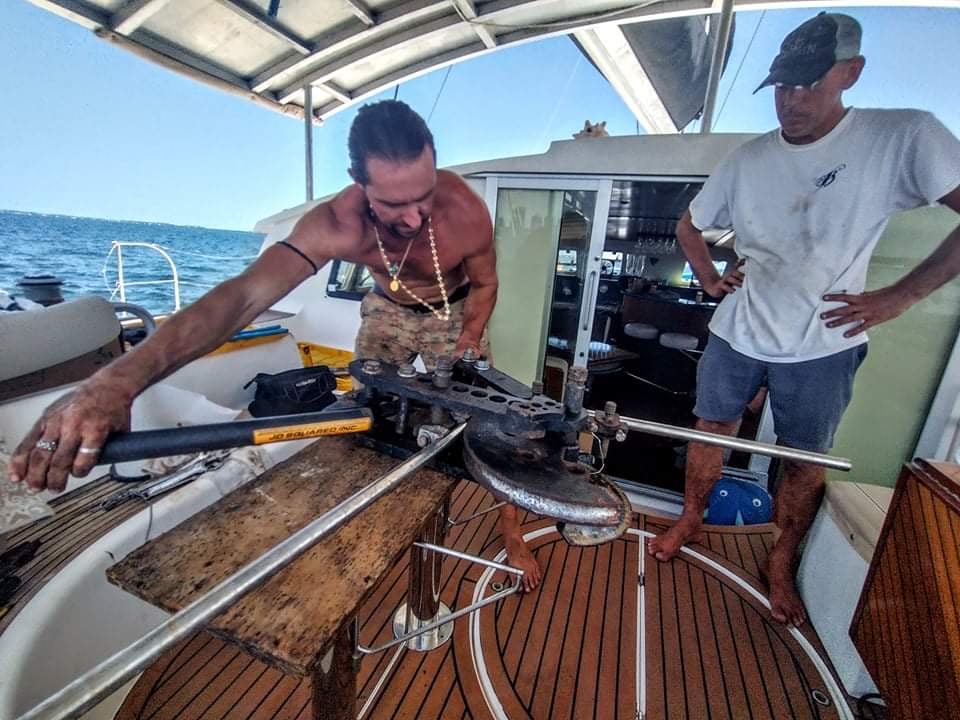
Photo: @windythesailboat
Of course, when a backpacker asks about the cost of living on a sailboat, they really want to know if you can live on a sailboat for free. When a family looking to take a sabbatical asks about the cost of living, they just want to know hard numbers and a budget breakdown.
At the end of the day, you can hoist a heavily patched sail on a jerry-rigged mast and work on the boat yourself, and eat only what you catch or grow. At the other end, you can set sail on a superyacht replete with full-time staff and jetskis.
We anchor in the same sand and watch the same sunset though, so you choose what you need to spend.
I would suggest being honest about your lifestyle. Consider being a little obsessive organised about your annual costs. Because costs are going to vary greatly from boat to boat.
How Much Does it Cost to Live on a Boat? (Pricing Breakdown!)
| Expense | Absolute Bum | Mid-Sized Boat Two | Large Boat with 4 – 5 people | Superyacht |
|---|---|---|---|---|
| Food/Water/Liquor | $200/year (because moonshine) | $120/week. | $300/week | $500/meal |
| Fuel (diesel) | $60/year | $300/year | $600/year | $400/hour |
| Port Fees | $0 – $300/year | $0 – $300/year | 0 – $300/year | $0 – $300+/year |
| Marina Charges | $0 (what is a marina?) | $0 – $250/year | $0 – $1000/year | The numbers start to make me shiver here. As in, $100,000+ annually. |
| Insurance | $0 | $800 – $1000 | $1500 – $2500 | Pfffft, again, something like $250,000+ |
| Power | $0 | $200 | $500 | lol. |
| Other (eg. kids education, souvenirs, rainy day fund) | $0 | $0 – $500 | $0 – $1000 | Limitless, probably. |
Obviously, the variables that go into the cost of running a liveaboard boat are vastly dependent on your style of living and where in the world you are sailing.
Generally speaking, it is cheaper to spend more time at anchor and in countries with a lower cost of living. However, insurance will still be 1% – 2% of the cost of your boat and port fees are port fees. Still gotta pay ’em, whether you’re a broke bum or a gazillionaire.
Sailing and Diving Go Together Like… Sailing and Diving!
A way to combine two of the best things on Earth is to indulge in a liveaboard experience.
This is exactly what it sounds like – you live aboard a boat, usually in some fantastic and tropical destination. You can indulge in some wonderous diving, and pick the brains of the crew about their tips on living aboard a vessel!
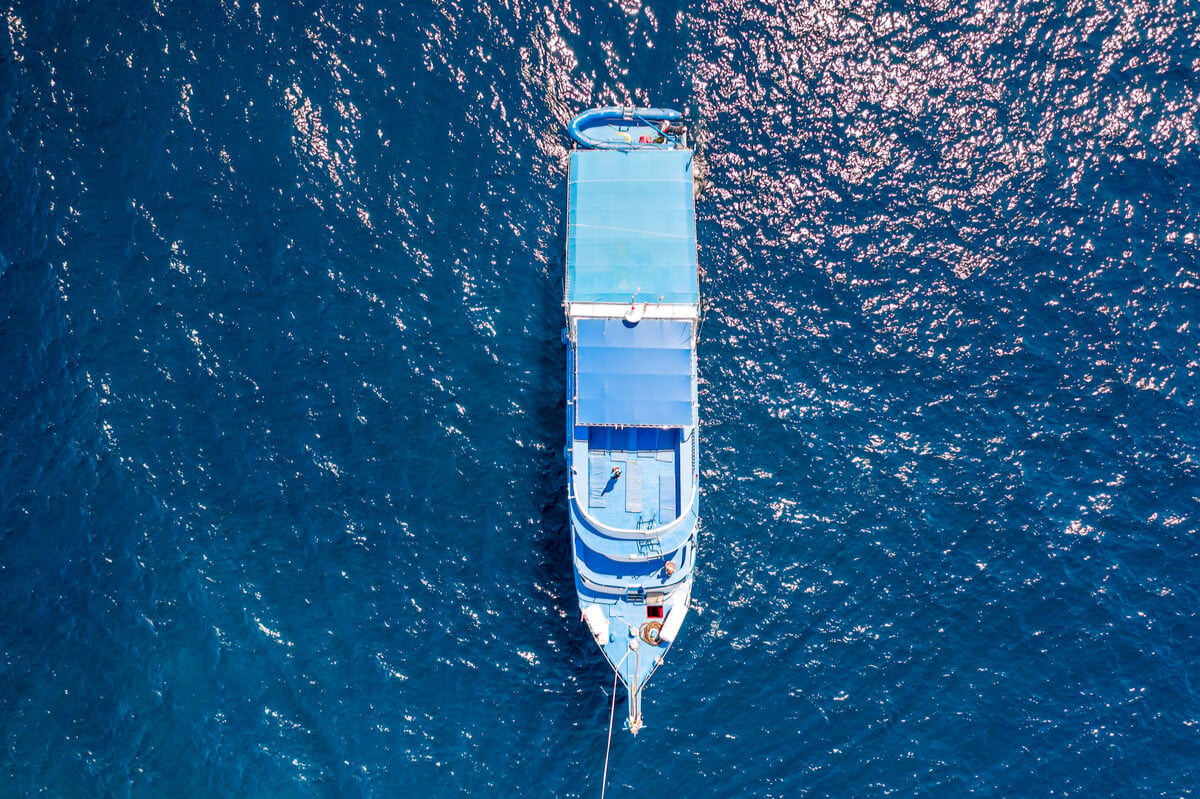
The focus of the liveaboards is the epic diving experiences in destinations that just aren’t as accessible when travelling in other ways. Also, it’s a great inspiration for you to hustle your way onto your own boat so that diving amongst reef sharks becomes as normal as your morning coffee.
Can You Live on a Sailboat for Free?
Now the controversial stuff.
I’ve had someone say, a little tongue in cheek: damn yachties get the wind for free and now they want everything else for free!
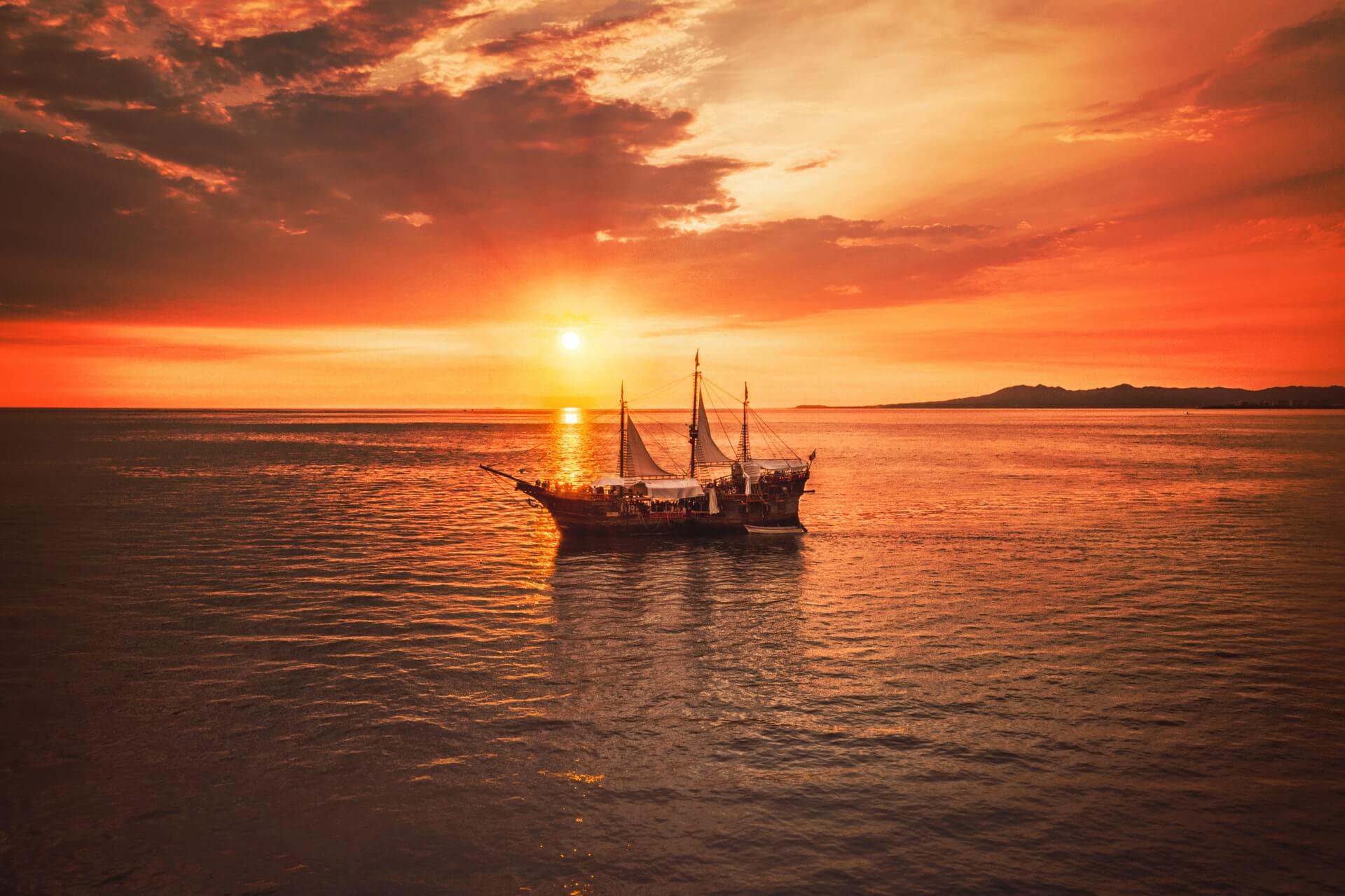
While I think being resourceful and a bargain hunter is the best way to live your life, boat or no boat, it’s just as important to have a bitta respect. So when you hit the seas or the road, I don’t see the point in haggling hard over what amounts to 50 cents.
When it comes to boat stuff, in particular, break it down into your shelter, food, and fuel, and don’t aim to get everything for free.
Aim to sustain your lifestyle for as long as possible in a way that doesn’t compromise it for everyone else. In other words, be ethical about your damn budget travel.
The most rewarding consequence of trying to keep costs down is creating a more or less self-sustaining yacht. Better for you and your personal growth; better for this pale blue dot we call home.
Sailboat Cost Cutter #1: Shelter
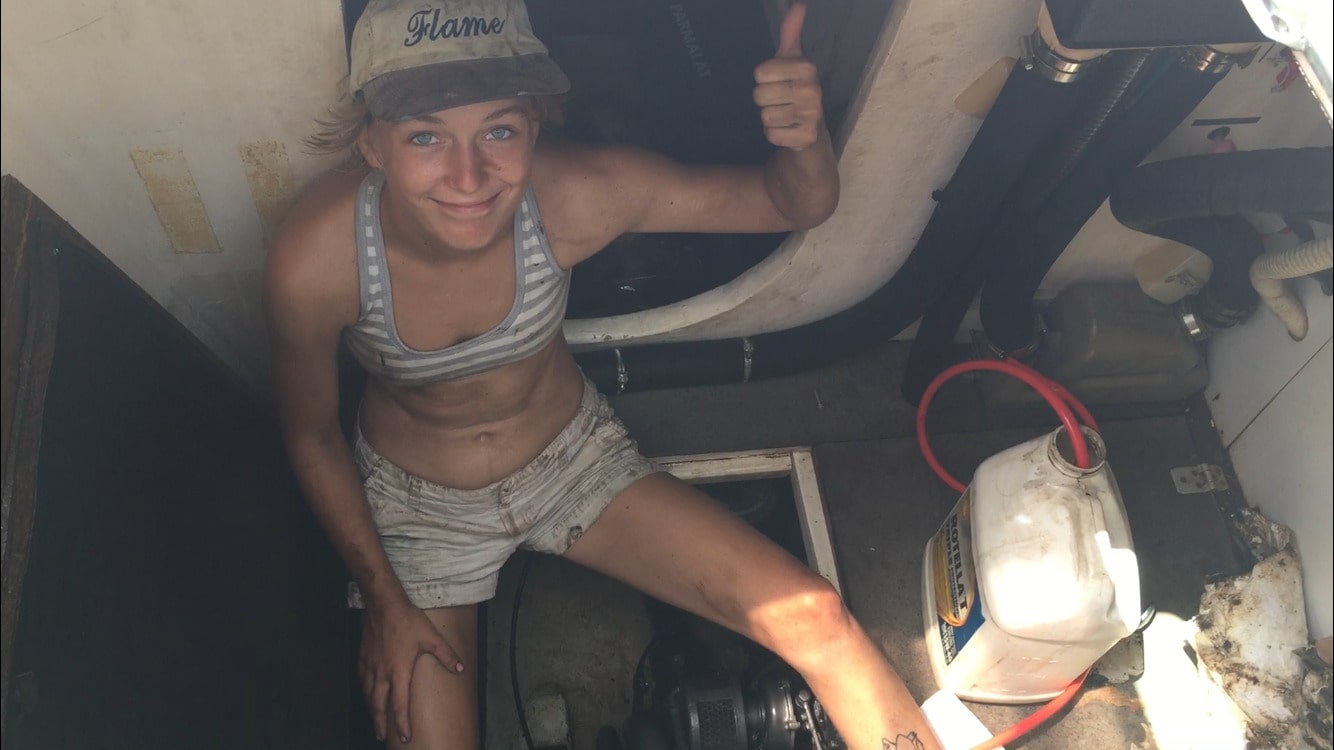
Maintaining your shelter (i.e. your boat) is not going to be a ‘free’ exercise. You will pay with money, or your own labour and time, to maintain it.
It will be an exercise in learning all kinds of systems – both mechanical and electrical – and time management. Do you want to pay for that task with money or your labour? Whatever you land on for each maintenance task that inevitably comes up, you will learn that to sustain this boat bum lifestyle you just gotta take care of your wee home and she will take care of you.
It is always free to sleep on your boat while underway. Well, it doesn’t cost any money anyway. You are investing a lot of time and energy into the passage, but you’re not paying to sleep on your boat!
Once you arrive, you can choose to stay in a marina, on a mooring, or at anchor. Anchoring will always be the cheapest (usually free) and so you don’t have to spend a lot to live in paradise. But don’t be a dick.
- Have the right visa.
- Be respectful of others in the anchorage.
- Don’t dump shit (literal or otherwise) overboard unless you are sure you’re allowed to.
- Be friendly and offer your neighbours a hand if they need one.
This lifestyle can bring out the best in us provided we’re responsible travellers, so lean into that.
Sailboat Cost Cutter #2: Fuel
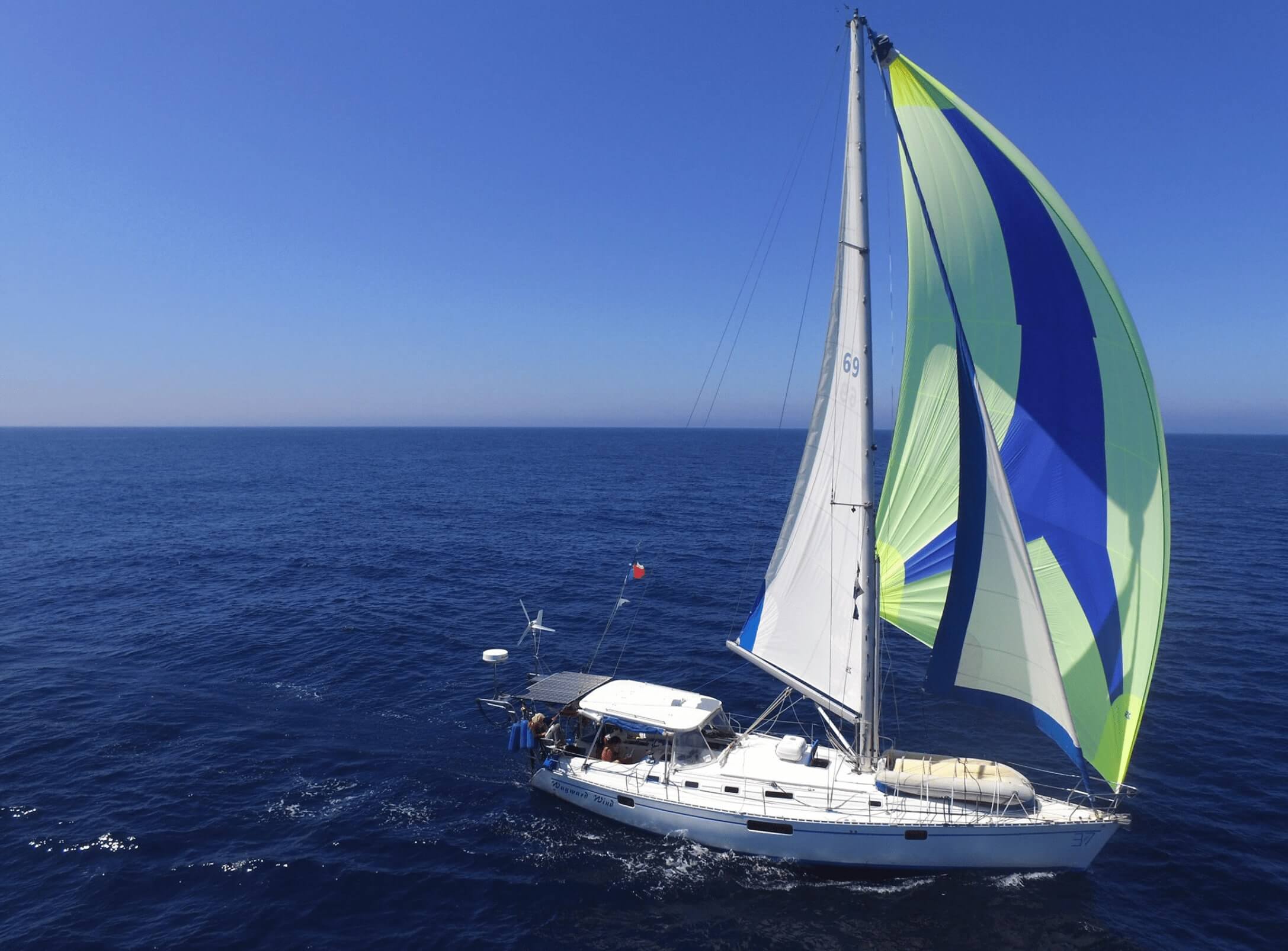
Photo: @windythesailboat
As my friend said, damn yachties get the wind for free! Much of the energy needed to go from A to B is yours for the taking, provided you can harness it efficiently with your sails. But as with DIY vs paying for repairs, sometimes you pay just as dearly with your time as you would have with your money.
If you are becalmed, the engine may be just the thing to help you out. When coming into a marina, you’re not going to want to be under sail. Likewise, in a storm, it is time to put the sail away and turn on the engine for stability. So having a little diesel onboard is necessary.
Compared to land life, people living on a boat can minimise their carbon footprint and live very simply. But it’s difficult to ask the Earth for none of its resources. Just be mindful about the way you live, be eco-friendly, and try your best to not waste resources.
You can recharge your boat batteries for electronics with the sun though – provided you can harness it with solar panels. And a lot of liveaboards will have a wind turbine for extra power on the less sunny days. This stops you from needing to use the engine so much. Yay for money, yay for the environment.
It’s never going to be completely free. You either pay with time or money. But you can certainly save a lot of money on fuel while living on a boat. This is a rewarding way to sustain your lifestyle and be kinder to the planet.
Sailboat Cost Cutter #3: Food
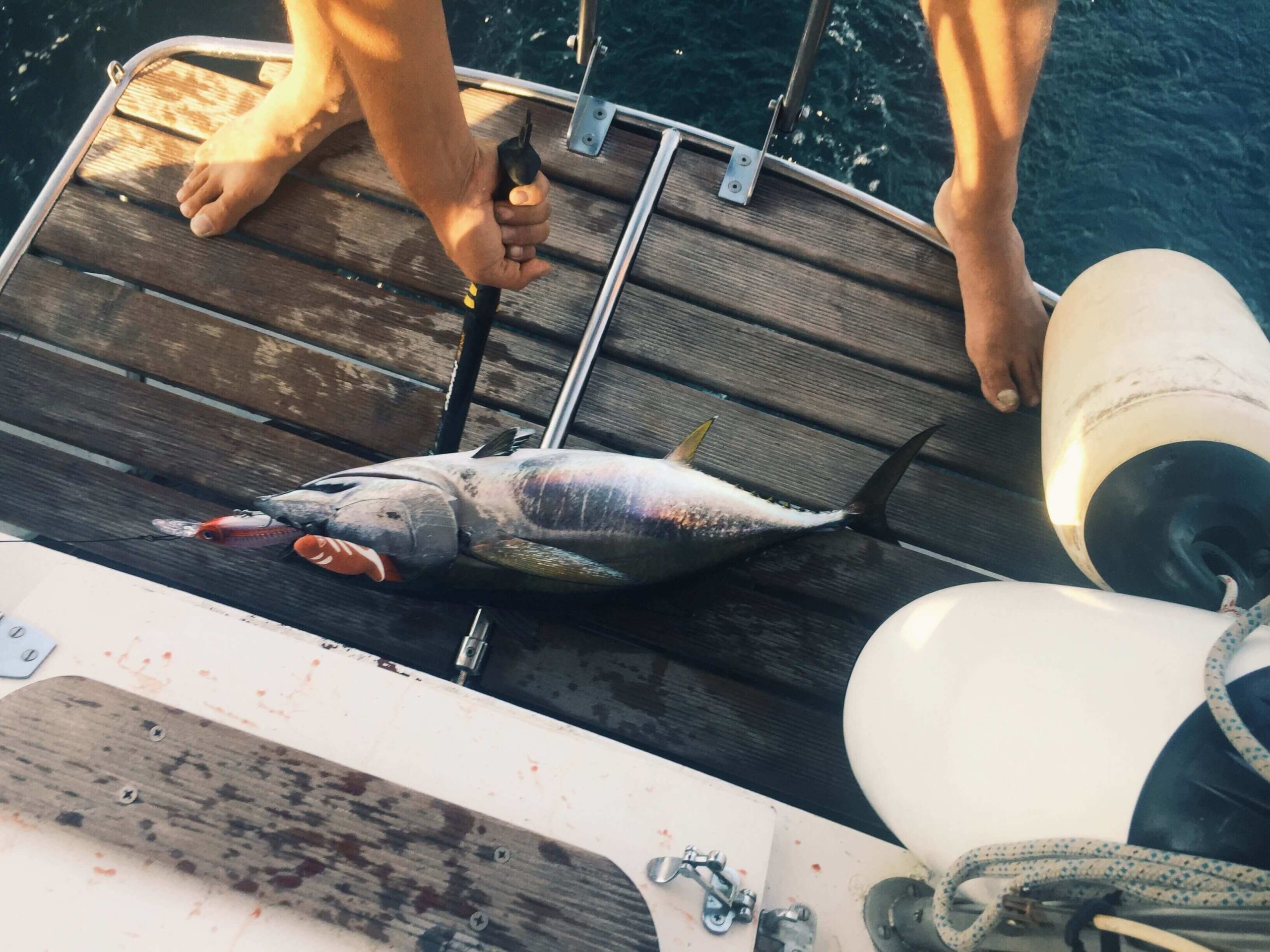
I apply the same principles to food as I do to food and shelter: you pay with money or you pay with time and labour. Also, don’t be a dick, and be good to the environment. What comes around goes around.
This means, when it’s available, I will spearfish and I will hunt. This is me paying for my food with my time and labour rather than money. But I would also argue that it’s fulfilling my other principles of:
- Not being a dick and…
- Being good to the planet.
Hear me out: I think vegans and hunters alike would agree that factory farming and the industrial scale of meat production are fucked up. It’s a waste of our water, arable land, and produces poorer quality meat. Furthermore, the animals suffer tremendously.
But if I’m kicking it in Kiribati, there is no way I’m going to be a vegetarian and still believe I’m doing a solid for the planet. The carbon footprint required to get my strictly vegetarian tofu to the remote islands is greater than the carbon footprint of me harvesting a fish every few days.
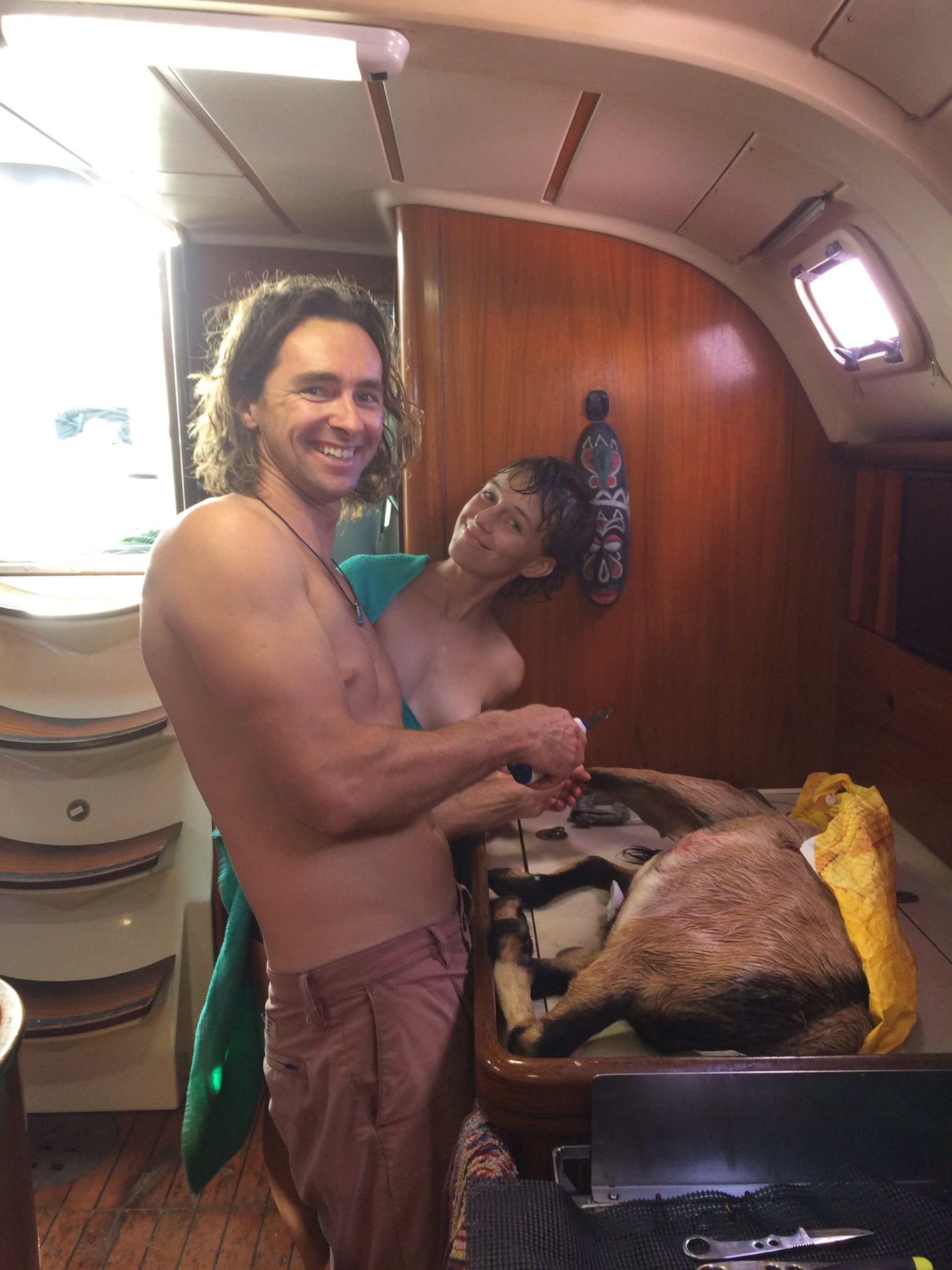
That fish has swum about its whole life having a good time doing cool fish stuff. And then, like all of us will, it died. I have immense gratitude toward this being for providing me with sustenance. I feel like I am part of a cycle of life that predates my puny existence.
In the same vein, to bring tofu to the Caribbean has required a process that is on the whole less ethical than going for a shoot and getting a feral goat for dinner.
The land cleared to grow the soybeans + the production of soybeans into tofu + the carbon cost of flying the tofu product into the island = YIKES.
The feral goats that destabilize delicate island ecosystems? They had a good goat-y life and then they became a good goat-y curry that fed 12 people.
Ok, I’m done. Eat meat or don’t; ethical animal tourism and all that jazz, however, morality is complicated. There are ways to reduce the money you spend on food and your carbon footprint without being a dick.
I’d also say that in the process of harvesting your own food, you gain a greater appreciation for life on this planet. And get a sense of urgency around stepping up to protect it. Give it a try; you might be surprised.
Epic Tips for Broke Boatpackers
- Know your knots. Apart from knots being fascinating in their own right (knots were probably invented alongside stone tools?!), they are the foundation of boat life. Knowing a couple of basics, like a bowline, will give you a good leg up when joining a boat.
- Be able to cook at least two decent meals, also be clean. You aren’t only working, but living on this boat with someone. Take care of your space and bring some good food to the table and you will go a long way as a crew member.
- Go to docks and ask around. This is a good way to meet people – even if you just end up crew for a day sail. Be friendly, make yourself known, and find you’ll find yourself on a boat in no time.
- Facebook can be your friend. When walking the docks fails, there is a multitude of Facebook and other social media groups dedicated to connecting wannabe crew with boats!
- Know how to write about yourself on your Facebook adverts. But you’ve got to know how to sell yourself! If you can cook a bomb-ass puttanesca and can tie a reef knot – mention it! Don’t sell yourself short! That being said, don’t exaggerate and tell fibs about the sailing experience you (don’t) have. The truth will come out painfully during the first bit of real sailing you do, so be honest. There’s usually captains willing to teach the basics for a bit of company and a good meal.
- Knowing how to fillet a fish is handy. Sailors know how to sail. They don’t necessarily know how to fish. So if you can bring this skill to the table, you’re going to be a beloved crew member in no time!
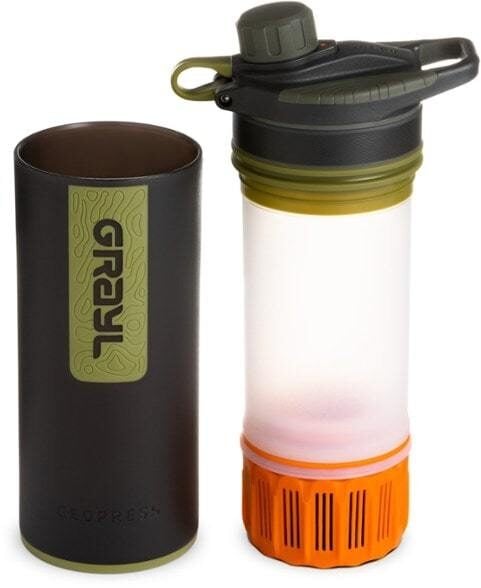
Drink water from ANYWHERE. The Grayl Geopress is the market’s leading filtered water bottle protecting your tum from all the waterborne nasties. PLUS, you save money and the environment!
Single-use plastic bottles are a MASSIVE threat to marine life. Be a part of the solution and travel with a filter water bottle.
We’ve tested the Geopress rigorously from the icy heights of Pakistan to the tropical jungles of Cuba, and the results are in: it WORKS. Buy a Geopress: it’s the last water bottle you’ll ever buy.
Buy a Geopress! Read the ReviewLast Tips for Living the Boat Life!
Sweet, glorious tips from a pro-pirate to a soon-to-be, the seas are calling, so go sail them!
Safely.
Stay Safe, Boat Bums!
One thing that many intrepid little sailors are not good at? Estimating danger and the likelihood of death.
Maybe this is a good thing because you do have to be the right sort of mad to get into a sailboat and cross an ocean.
Maybe, just maybe, you should consider purchasing travel insurance before shit hits the fan though. But enough from me, hear it from a fellow adventurer.
World Nomads’ mission is to support and encourage travellers to explore their boundaries. They offer simple & flexible travel insurance, and safety advice to help you travel confidently.
They’ve been doing it since 2002 – protecting, connecting, and inspiring independent travellers just like you.
Get a quote below or read our in-depth review!
FAQs About Life on a Boat
Here’s what I know you want to know about living on a boat!
Fair Winds, Sailor!
Living on a boat will challenge you.
There is no other lifestyle that forces you to be attuned to weather patterns, engine maintenance, personal dynamics, ethical dilemmas at every mealtime; to consider watermakers and wind turbines; to completely surrender while also stepping up and getting shit done.
The nitty-gritty of how to live on a sailboat will not be fully revealed to you until you step onto one and do it. But, if you can poop and provision you’re halfway there!
You gotta lick your finger and hold it up to the wind. Ah yes, the trades blow west. Rum and a seriously sexy sunset await.
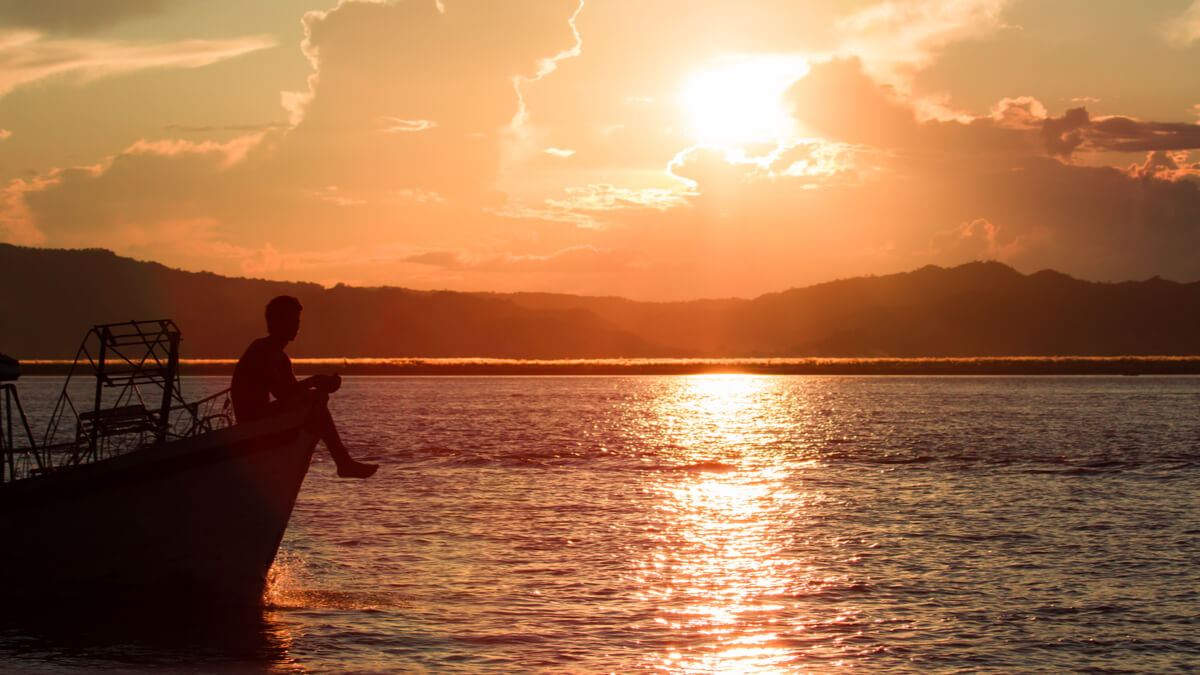

And for transparency’s sake, please know that some of the links in our content are affiliate links. That means that if you book your accommodation, buy your gear, or sort your insurance through our link, we earn a small commission (at no extra cost to you). That said, we only link to the gear we trust and never recommend services we don’t believe are up to scratch. Again, thank you!





